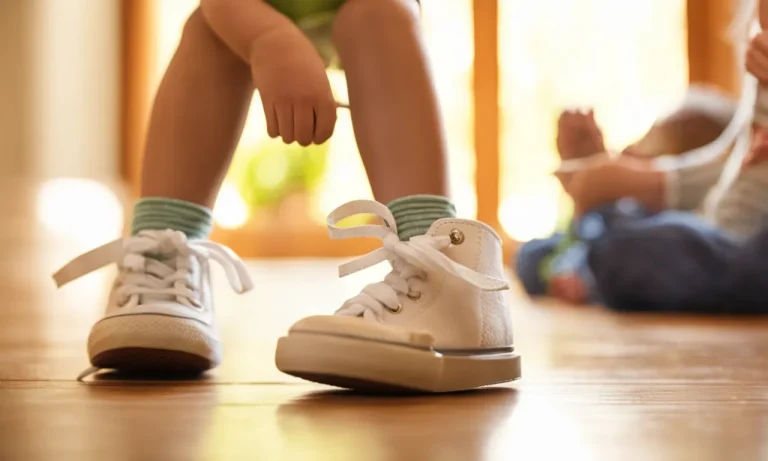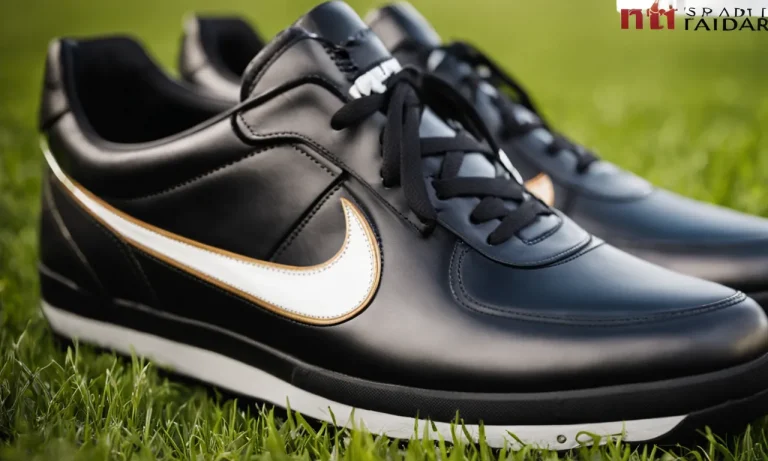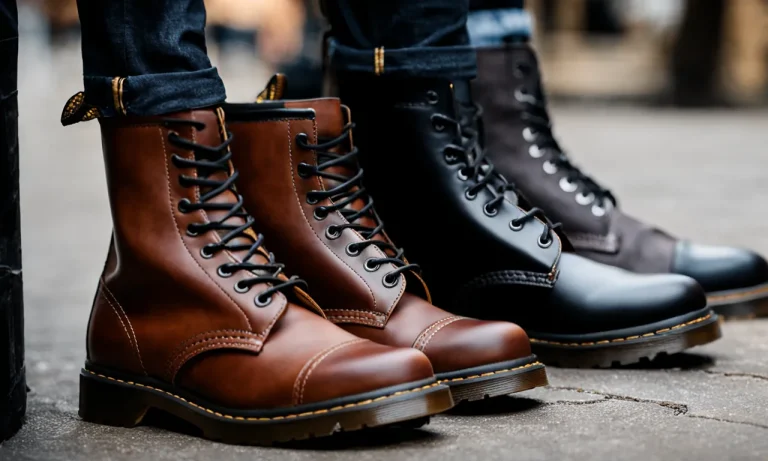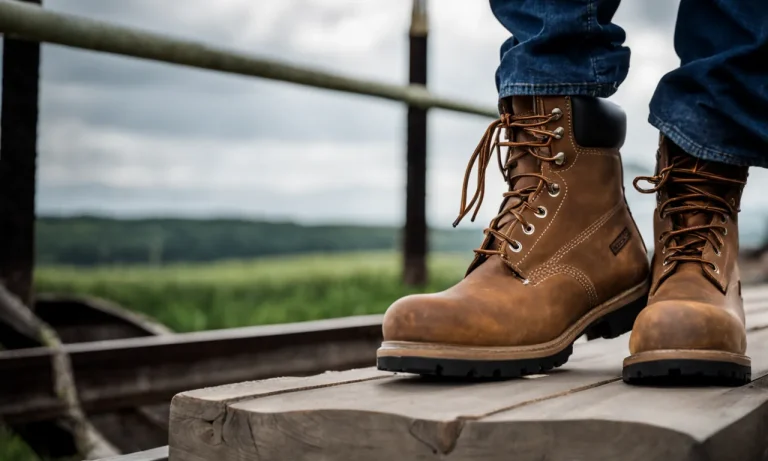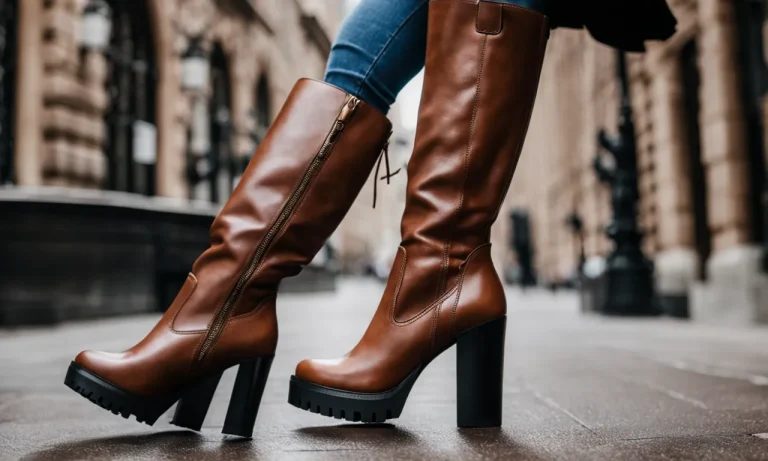Timberland boots have been a popular footwear choice for decades, loved for their rugged style and durability. But with their thick, rugged build, some wonder – are Timberland boots actually comfortable for walking and standing in all day?
If you’re short on time, here’s a quick answer to your question: Yes, Timberland boots can be very comfortable with the right fit and style. Their signature yellow boots have cushioned insoles, shock absorption, and ankle support for comfort.
But some styles like their work boots may need breaking in.
Key Factors That Impact Timberland Boot Comfort
When it comes to footwear, comfort is a top priority for many people. Timberland is a well-known brand that is often praised for its durability and ruggedness. However, are Timberland boots comfortable? Let’s take a detailed look at the key factors that impact the comfort of Timberland boots.
Sole Cushioning
One of the most important factors that contribute to the comfort of Timberland boots is the sole cushioning. Timberland boots are designed with advanced cushioning technologies that provide excellent shock absorption and support.
The brand’s proprietary Anti-Fatigue technology, for example, uses geometric cone support to reduce foot fatigue and provide all-day comfort. Additionally, the use of high-quality materials in the construction of the sole ensures long-lasting comfort.
Break-In Period
Like any other pair of boots, Timberland boots may require a break-in period. During this time, the materials used in the boots will gradually adjust to the shape of your feet, providing a customized fit and increased comfort.
It is important to note that the length of the break-in period can vary depending on the individual and the specific model of Timberland boots.
Getting the Right Fit
Getting the right fit is crucial when it comes to the comfort of any footwear, including Timberland boots. It is recommended to measure your feet accurately and refer to the brand’s size chart to ensure a proper fit.
Timberland offers a wide range of sizes and widths to accommodate different foot shapes, so finding the perfect fit should not be a problem.
Lace-Up vs Chukka Styles
Timberland offers both lace-up and chukka styles in their boot collection. Lace-up boots provide more adjustability and can be tightened or loosened to achieve a comfortable fit. On the other hand, chukka boots are slip-on style and may have a different feel compared to lace-up boots.
It ultimately comes down to personal preference and what feels most comfortable for you.
Hybrid Comfort Technologies
Timberland is constantly innovating and introducing new technologies to enhance the comfort of their boots. For instance, some Timberland boots feature SensorFlex technology, which combines flexible outsoles, supportive suspension, and independent suspension pods for optimal comfort and stability.
These hybrid comfort technologies contribute to the overall comfort of Timberland boots and make them a popular choice among outdoor enthusiasts.
Most Comfortable Timberland Boots for Walking
When it comes to comfort, Timberland has a reputation for producing high-quality boots that provide excellent support and cushioning. Whether you’re going for a long hike or simply walking around the city, Timberland offers a range of comfortable options to choose from.
6-Inch Premium Waterproof Boots
One of Timberland’s most iconic and popular designs, the 6-Inch Premium Waterproof Boots are known for their exceptional comfort. These boots feature a padded collar, a cushioned insole, and a durable rubber outsole for maximum support and stability.
The waterproof construction ensures that your feet stay dry, making them ideal for outdoor adventures.
Did you know? The 6-Inch Premium Waterproof Boots are made with premium full-grain leather sourced from environmentally-friendly tanneries.
White Ledge Hiking Boots
If you’re an avid hiker, the White Ledge Hiking Boots are an excellent option. These boots are designed to provide optimal comfort and support on rugged terrains. With a removable dual-density EVA footbed and a padded collar, these boots offer superior cushioning and shock absorption.
The rubber lug outsole provides excellent traction, ensuring stability on any surface.
Fun fact: The White Ledge Hiking Boots have been tested and approved by the American Podiatric Medical Association for their excellent foot health benefits.
Chukka Boots
For a more casual and versatile option, the Chukka Boots are a great choice. These boots feature a sleek and stylish design, making them suitable for both formal and casual occasions. With a cushioned footbed and a flexible rubber outsole, these boots offer all-day comfort and ease of movement.
👍 Pro tip: The Chukka Boots can be paired with jeans or chinos for a trendy and fashionable look.
Earthkeepers Rugged Boots
For those who prioritize sustainability, the Earthkeepers Rugged Boots are a perfect choice. Made with recycled materials and featuring a Green Rubber outsole, these boots are not only comfortable but also environmentally friendly.
The anti-fatigue footbed provides all-day comfort, while the waterproof construction ensures dryness in any weather condition.
Interesting fact: Timberland has planted over 10 million trees worldwide as part of their commitment to environmental sustainability.
Style Considerations for Comfort
When it comes to comfort, Timberland boots have a lot to offer. They are known for their durable construction and quality materials that provide excellent support and cushioning. However, there are a few style considerations that can further enhance the comfort of these boots.
Ankle Height and Support
One important factor to consider when assessing the comfort of Timberland boots is the ankle height and support they provide. Timberland offers a range of boot styles, from low-cut to high-cut options.
Higher-cut boots provide better ankle support, which can be beneficial for activities that require more stability and protection, such as hiking or working in rugged terrains. On the other hand, low-cut boots offer more flexibility and freedom of movement, making them suitable for everyday wear.
Insulation and Breathability
Insulation and breathability are crucial aspects of boot comfort, especially in extreme weather conditions. Timberland boots are designed with various insulation technologies to keep your feet warm in cold temperatures.
For instance, their PrimaLoft® insulation provides excellent warmth without adding excessive bulk. On the other hand, for warmer climates, Timberland offers boots with breathable linings that allow moisture to escape, keeping your feet dry and comfortable.
Tread Grip and Traction
The grip and traction of Timberland boots are essential for preventing slips and falls, particularly on slippery or uneven surfaces. Timberland incorporates advanced tread patterns and materials into their boots to enhance traction.
Their patented rubber outsoles are designed to provide excellent grip, even in wet or icy conditions. This ensures that you can confidently navigate various terrains without compromising on comfort or safety.
Breaking in Timberland Boots
When you first get a pair of Timberland boots, it’s important to give them some time to break in and mold to your feet. This will ensure maximum comfort and longevity of the boots. Here are a few tips to help you break in your Timberland boots:
Wear Them at Home First
One of the best ways to break in your Timberland boots is to wear them around the house before taking them out for a full day of use. This will allow your feet to adjust to the boots and help soften the leather.
Start by wearing them for short periods of time and gradually increase the duration as they become more comfortable.
Use a Boot Stretcher
If you’re finding your Timberland boots to be a bit tight or uncomfortable in certain areas, using a boot stretcher can help. A boot stretcher is a device that expands the width and length of your boots, providing relief for tight spots.
Simply insert the stretcher into the boots and adjust it to the desired width and length. Leave it in overnight or for a few days to allow the boots to stretch.
Try Alternative Lacing Methods
The way you lace your Timberland boots can have an impact on their comfort. Experiment with different lacing techniques to find one that works best for you. For example, the “heel lock” technique can provide extra support and prevent heel slippage.
You can easily find tutorials online that demonstrate various lacing methods for boots.
Use a Leather Conditioner
Applying a leather conditioner to your Timberland boots can help soften the leather and make them more comfortable. Leather conditioners moisturize the leather, preventing it from drying out and cracking. Be sure to choose a conditioner specifically designed for use on leather footwear.
Apply the conditioner evenly to the boots and allow it to absorb before wearing them.
By following these tips, you can break in your Timberland boots and ensure they are as comfortable as possible. Remember, everyone’s feet are different, so it may take some time to find the perfect fit for you.
Don’t give up on your boots too quickly – with a little patience and effort, you’ll be enjoying the comfort and style of Timberland boots in no time!
Caring for Your Timberlands
Clean Them Regularly
One of the most important aspects of caring for your Timberland boots is to clean them regularly. This helps to remove dirt, grime, and stains that can accumulate over time. To clean your boots, start by removing the laces and giving them a good shake to remove any loose dirt.
Then, use a soft brush or cloth to gently scrub away any remaining dirt or stains. If necessary, you can also use a mild detergent or specialized boot cleaner for tougher stains. Once clean, allow your boots to air dry naturally, away from direct heat sources.
Use Cedar Shoe Trees
Using cedar shoe trees is another great way to care for your Timberland boots. Cedar shoe trees help to maintain the shape of your boots and absorb moisture, preventing odors and the development of mold or mildew.
Simply insert the shoe trees into your boots when you’re not wearing them, and they’ll help to keep them in great condition. Additionally, cedar has natural properties that repel insects, so using cedar shoe trees can also protect your boots from potential damage.
Re-Waterproof Periodically
To keep your Timberland boots water-resistant, it’s important to periodically re-waterproof them. Over time, the waterproofing properties of the boots can wear off, leaving them more susceptible to water damage.
To re-waterproof your boots, you can use a waterproofing spray or wax specifically designed for leather footwear. Apply the product evenly to the entire surface of the boots, paying extra attention to the seams and stitching. Allow the boots to dry completely before wearing them again.
Get Repairs When Needed
Even with proper care, your Timberland boots may still require repairs from time to time. If you notice any damage such as loose stitching, worn out soles, or broken eyelets, it’s important to get them repaired promptly.
Ignoring small issues can lead to bigger problems and shorten the lifespan of your boots. You can take your boots to a professional cobbler or contact Timberland directly for repair services. Remember, investing in repairs will extend the life of your boots and ensure they continue to provide comfort and durability for years to come.
Conclusion
Timberland boots can provide all-day comfort once broken in, especially lace-up styles with cushioned soles like their 6-inch Premium boots. Certain models like their hiking and work boots may need extra break-in. Getting the right size and fit is key, along with proper care and maintenance.
With a little patience, Timberlands can become your go-to boots for both style and comfort.

